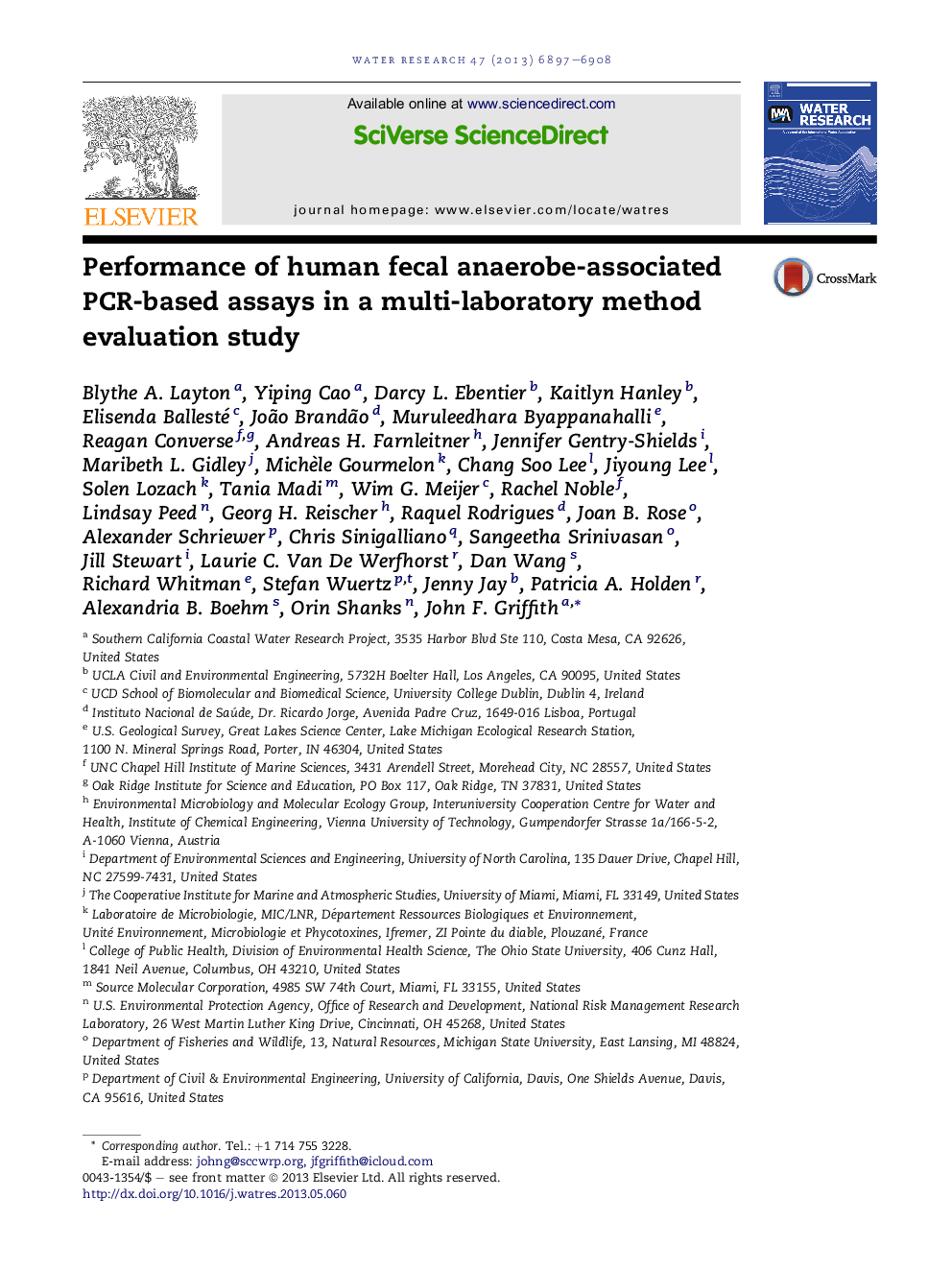| کد مقاله | کد نشریه | سال انتشار | مقاله انگلیسی | نسخه تمام متن |
|---|---|---|---|---|
| 4481856 | 1316838 | 2013 | 12 صفحه PDF | دانلود رایگان |

• Ten assays were evaluated with 12 fecal sources using 11 challenge sample units of measure.
• Method performance depended on the classification of detected but not quantifiable samples.
• HF183 Taqman® was the most effective marker in this California-based study.
• Standardization of protocols is essential for widespread implementation.
A number of PCR-based methods for detecting human fecal material in environmental waters have been developed over the past decade, but these methods have rarely received independent comparative testing in large multi-laboratory studies. Here, we evaluated ten of these methods (BacH, BacHum-UCD, Bacteroides thetaiotaomicron (BtH), BsteriF1, gyrB, HF183 endpoint, HF183 SYBR, HF183 Taqman®, HumM2, and Methanobrevibacter smithii nifH (Mnif)) using 64 blind samples prepared in one laboratory. The blind samples contained either one or two fecal sources from human, wastewater or non-human sources. The assay results were assessed for presence/absence of the human markers and also quantitatively while varying the following: 1) classification of samples that were detected but not quantifiable (DNQ) as positive or negative; 2) reference fecal sample concentration unit of measure (such as culturable indicator bacteria, wet mass, total DNA, etc); and 3) human fecal source type (stool, sewage or septage). Assay performance using presence/absence metrics was found to depend on the classification of DNQ samples. The assays that performed best quantitatively varied based on the fecal concentration unit of measure and laboratory protocol. All methods were consistently more sensitive to human stools compared to sewage or septage in both the presence/absence and quantitative analysis. Overall, HF183 Taqman® was found to be the most effective marker of human fecal contamination in this California-based study.
Figure optionsDownload high-quality image (170 K)Download as PowerPoint slide
Journal: Water Research - Volume 47, Issue 18, 15 November 2013, Pages 6897–6908